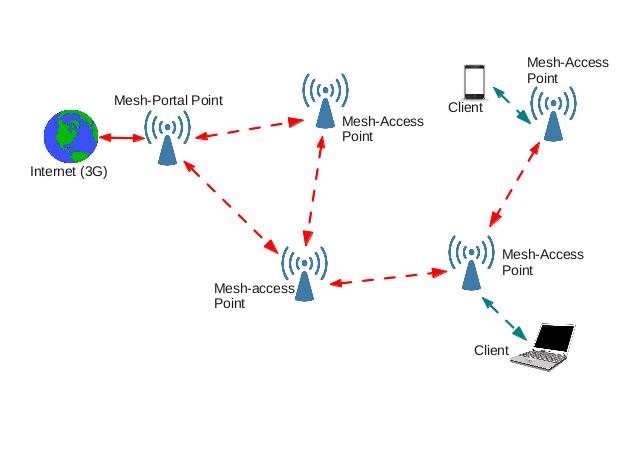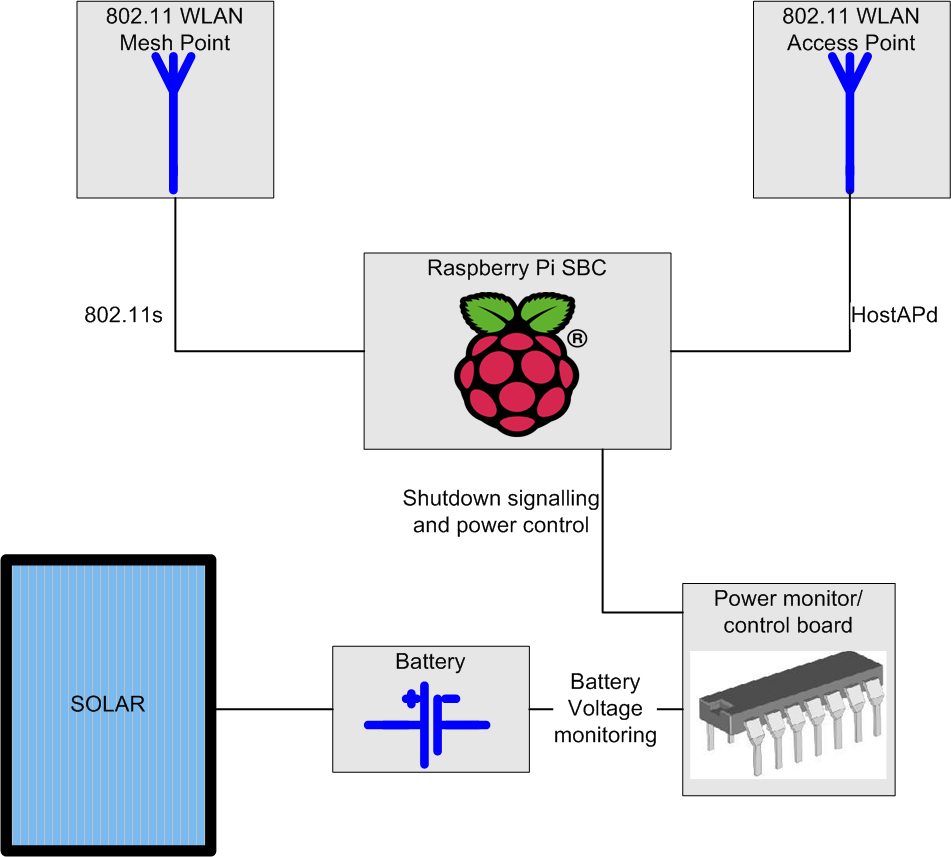Internet
access has become important at Sandhills. People vistiting obviously like
to use it for "browsing the 'net", but it's also used for reporting
collected data and webcam images, etc.
The property at Sandhills is measured in acres - not square kilometers,
and yet covering its area with wireless networking has proven to be an
interesting technical challenge. This is exacerbated when using
typical client devices. A point-to-point connection between two high
quality wireless devices with good antennas is one thing. Allowing the
average smart-phone to connect to a wireless network while walking around
is another.
For this reason I've started building a wireless mesh. The idea is to
place "nodes" in strategic points around the property. These nodes talk
to each other, but they also allow standard clients to connect. With enough
of these nodes it is hoped that clients anywhere on the property will have wireless access.
Below is an example of a generic mesh network.
There are many implimentations of wireless mesh, but the IEEE have finally given their blessing to 802.11s.
802.11s has started to appear in the Linux kernel, so I've decided to use it.
There are two types of nodes in my mesh.
There is one single Mesh Portal Point (MPP). It's the node that is connected to the Internet via 3G.
The rest of the nodes are Mesh Access Points (MAP). These are both mesh
nodes, as well as access points. Good equipment can do this with one
802.11 radio, but as I'm using cheap USB wireless devices I need two such devices per node.
All the nodes are based on Raspberry Pi
units (my single-board computer of choice). Using real computers allows
nodes to be used for other purposes. For instance, add a USB web-cam,
and it's now an on-line camera.
Power is provides by solar charged batteries. Each node has a
microcontroller based power monitoring system that shuts down power to
the node if the batteries get depleted. This helps protect the
lead-acid batteries from deep discharges, extending their life. The
system powers the node again when the solar panels have charged the
battery up once more.
Below is a block diagram of my Mesh Access Points.
If you're interested in the schematic of the power control board, click here.


